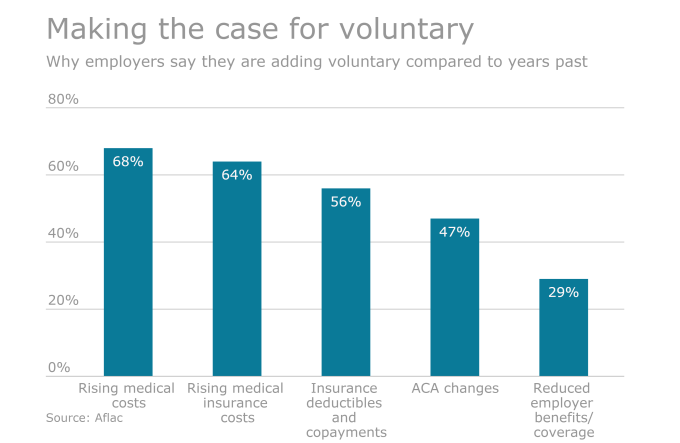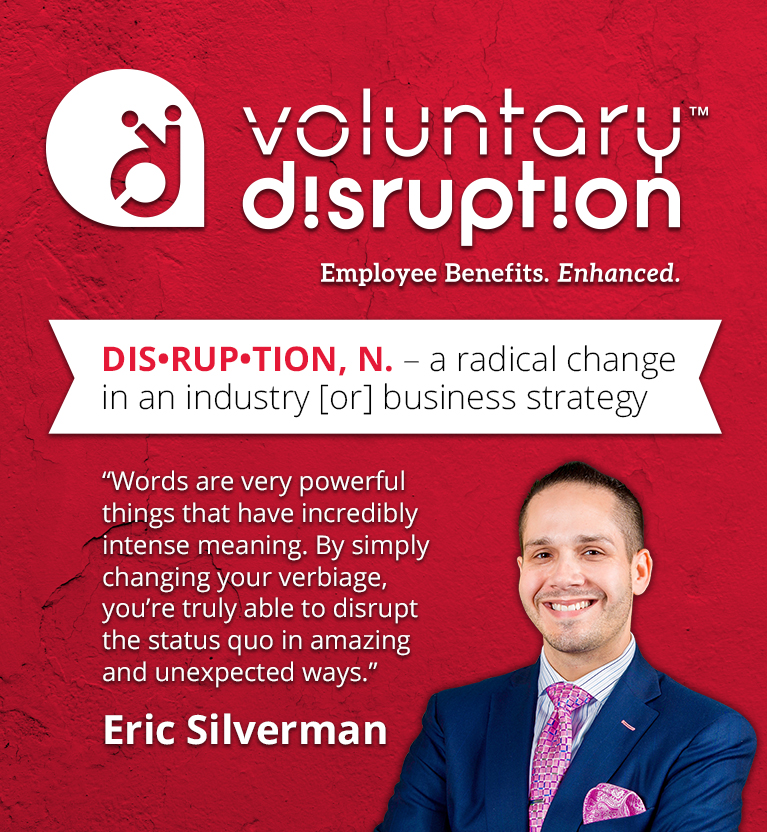Succeeding with enhanced benefits — formerly known as voluntary benefits — involves a super simple strategy. It’s all about setting up a dedicated time with your prospect or client to discuss how enhanced benefits fit directly into their total benefits strategy.
Those benefit brokers who get it, get it. But sadly, up to 95% take the wrong approach. As a result, they always hear, “No.”
Here’s a recent example of how things can go wrong. I had multiple conversations, turned training sessions, with a broker who sought me out and proactively wanted to work with me. All he had to do was set up an introductory meeting between me and his existing group client. The idea behind the meeting is to make enhanced benefits and group health benefits part of one comprehensive, bespoke strategy. I even encourage brokers like him to refer to me as their Director of Enhanced Benefits, Voluntary Vice President, or whatever title they like, to show we are on one unified team.
He said he was all-in and understood his mission was to simply set up the meeting and let me take it from there, but then I got this e-mail: “Eric, I asked my client if they were interested in discussing voluntary benefits and potential onsite education, but unfortunately, they gave me a sharp, ‘No,’ and I didn’t push back. I’ll continue to ask around, and we’ll get the next one!”

Sadly, the reality is, I get text messages, e-mails and calls like that more often than not. As sales people, we need to direct the client where we need, and want, them to go. In short, we must control the conversation. When you ask an open-ended, yes-no question about something so unappealing and boring such as employee-funded voluntary or enhanced benefits, you’re always going to get told, “No.” If you’re going to continue to do it this way, please just stop wasting your time, and don’t even bother.
Say you’re looking to buy a new car. The car sales person is going to ask you questions; do anything and everything to get you into a car that day, right? They’re going to point you in every direction based on what you say you have interest in and the reality is, as the consumer shopping for the car, you’re in charge.
But, as soon as you commit to the purchase, you’ve completely lost control. That salesperson is now in charge. They’re going to direct you where they want you to go. Wait here for the finance manager, sit here while we do this, stand there while we do that, sign, sign, sign, and then you’re finally done. All while, as the consumer, all you can think about is driving your new car off the lot and posting pictures on all of your social media platforms to show everyone your shiny, new ride.
Believe it or not, brokers must realize they need to be the car salesperson after the client has already agreed to the original purchase — health benefits. Employers pay you as their broker to give them unbiased advice and to consult on all things employee benefits. Rather than ignorantly asking if they’d like to go over a certain thing or a specific strategy, you need to assume they will.
It’s not, “Hey, would you be interested …?” It’s, “Hey, I need to set up a meeting for me and my Vice President of Enhanced Benefits to review the custom strategy we put together that will greatly increase your benefits, lower your costs, and help your employees in insurmountable ways. Is next Tuesday good or is Thursday better?”
Again, it’s an assumptive thought on the part of the broker that, “You pay me a lot of money, Mr. Employer, to give you the best advice to do what’s best for you and your employees. I’m telling you we are doing this. I’m not asking you; I’m telling you.”
I certainly never tell brokers to be so blunt or to be so abrasive, of course, but the reality is that when you’re assertive and you don’t make it a question, then ultimately good things happen — it just plain works.
You’re not Columbo
As a broker, you’re there because they have already hired you to give them advice on all things benefits; so now it’s time to complete what you were hired for. That doesn’t mean trying to pull a “Columbo,” though. In the long-running TV series, actor Peter Falk would spend the better part of an hour seemingly bumbling through a murder mystery, only to say, “Oh, by the way …” and solve the case in the last 10 seconds of the show.
You can’t pull a Columbo and expect to get the mystery solved in the closing seconds of a client visit. Alas, brokers do this all the time. They book a meeting with their client for the health insurance open enrollment strategy session. The topic of enhanced benefits doesn’t come up until they’re putting their coat on and heading out the door. “Oh, by the way, Mr. Business Owner, I almost forgot. I wanted to set up a meeting with my voluntary benefits guy to talk about the other benefits that your employees can pay for, if they want.”
Nearly 100% of the time, the employer says, “Oh yeah, no; let’s just deal with it next year.”
The broker checks it off his list, and tells me, “I ran it by Joe’s Plumbing, and geez, they just weren’t interested.”
I promise you, it was the old Columbo approach that screwed it up. It happens all the time, and here’s the bad news: It becomes a lose-lose-lose situation all around.
The employer loses because they’re not able to put together a custom enhanced benefits strategy which will greatly increase their ability to attract and retain quality employees and be competitive. The employee loses because they go without custom benefits that they should readily have access to. And, you as the broker lose because you’re not adding additional revenue to your bottom line.
This happens for one reason: The broker didn’t assume control of the sale and direct the client where they need to go.

